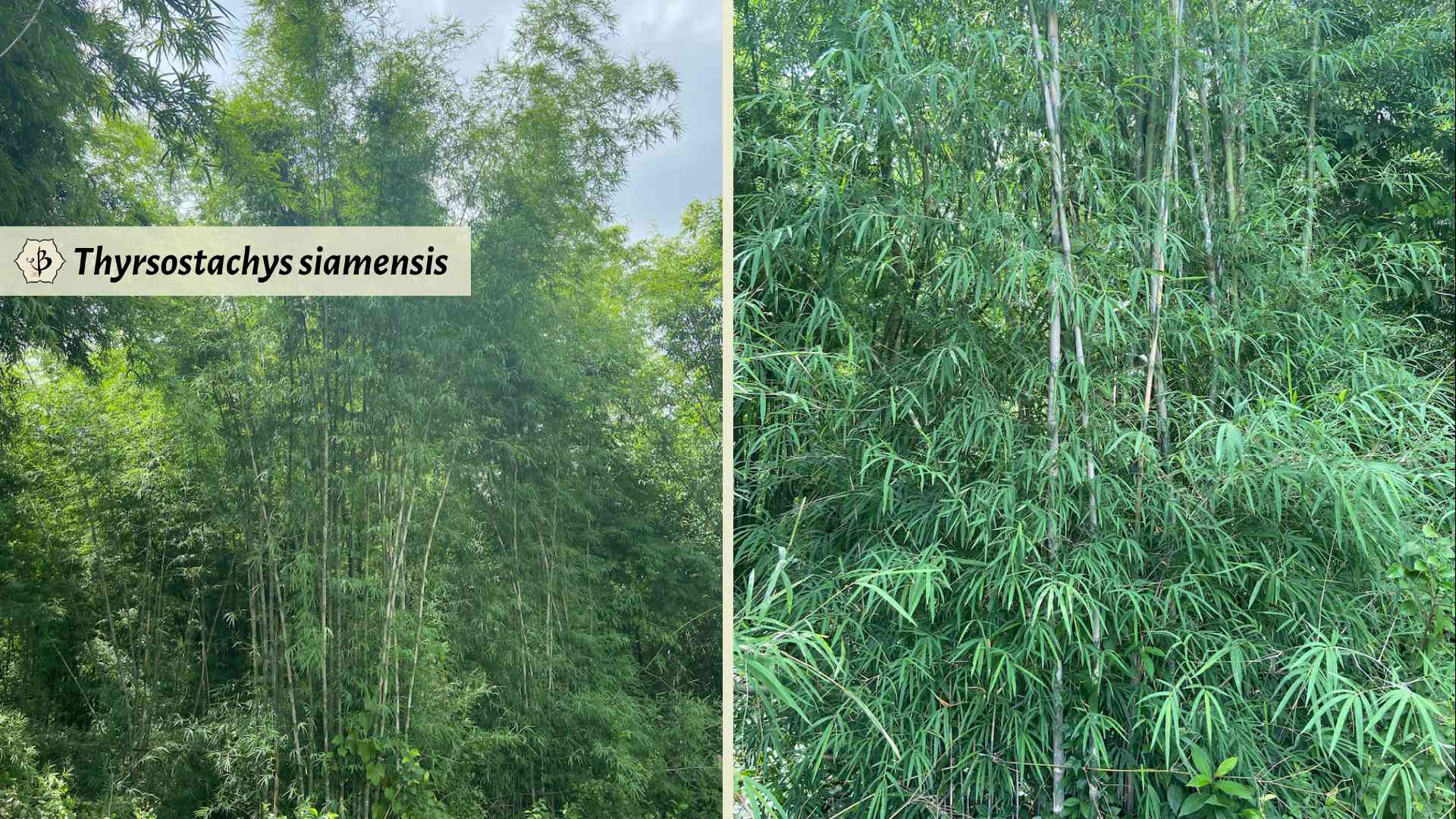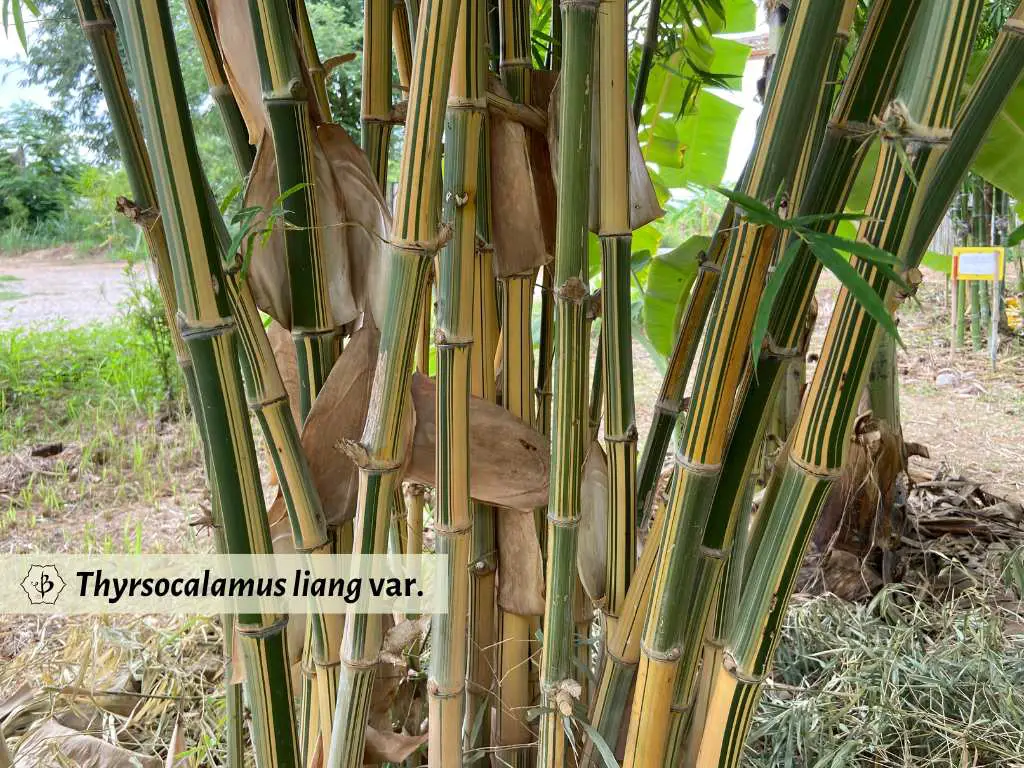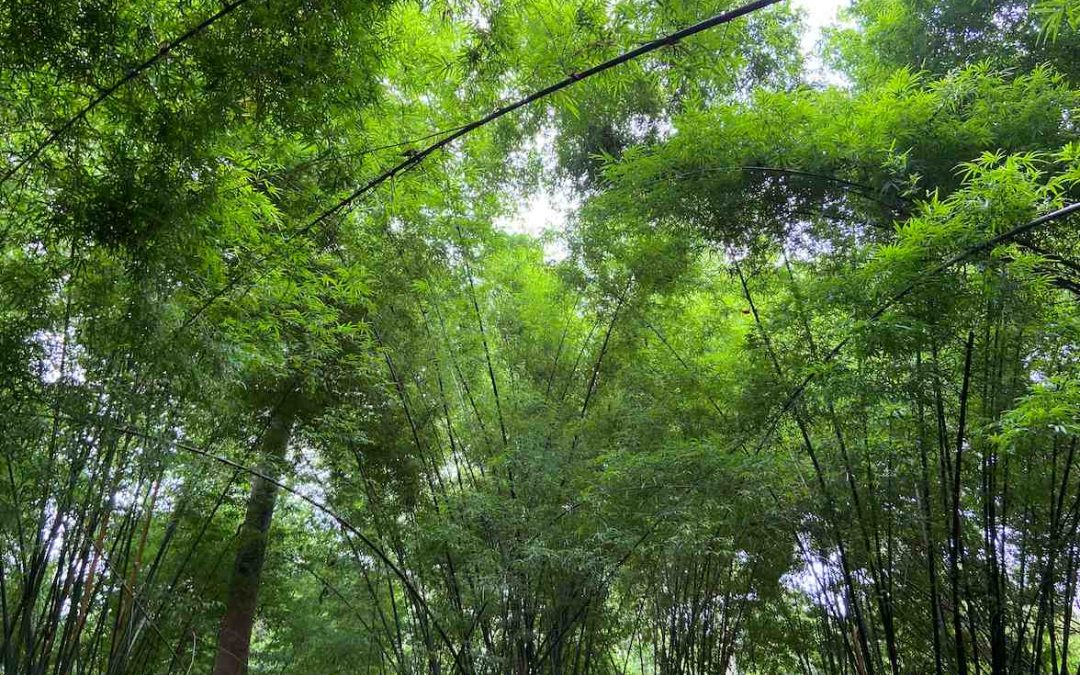Magical things are known to happen in the mystical bamboo forests of Thailand. Thyrsocalamus liang is one perfect example.
Thyrsocalamus liang is a naturally occurring, intergeneric bamboo hybrid endemic to central Thailand. It is a cross between Dendrocalamus copelandii and Thyrsostachys siamensis, both of which are common species in Southeast Asia. Liang or Phai Liang, as it’s known in Thailand, is prized for the size, strength, and straightness of its majestic culms. Locals use this bamboo widely for building materials, agriculture stakes, and various crafts.
This article is part of a series about bamboo and bamboo-related activities in Thailand.

Taxonomy of Thyrsocalamus liang
Despite the best efforts of humans to control and categorize plants and animals, nature always finds a way of bending the rules. Members of different species aren’t supposed to breed, certainly not to produce any fertile offspring. But once in a while, these frisky organisms are able to break with convention.
And so we end up with new hybrids and new species. But once in a great while, two species that don’t even belong to the same genus will manage to intermingle. And that’s how we end up with intergeneric hybrids.

Thyrsocalamus liang is a prime example of this phenomenon and one of a handful of natural, intergeneric bamboo hybrids. The scion of Dendrocalamus copelandii and Thysostachys siamensis, Liang has proven to be a very successful species in central Thailand. It is successful both in the sense of its ability to proliferate and in its usefulness as a plant of economic importance.
Given its regal heritage, this should come as no surprise. D. copelandii is one of the towering giants of the genus Dendrocalamus with massive poles, and T. siamensis is an especially elegant and attractive bamboo variety with slender but tightly clustered culms. Liang has taken the best of both, to produce extremely tall canes, nearly 100 feet in height, with a medium thickness of about 2-2.5 inches, but remarkably strong and straight.

Economic importance of Thyrsocalamus liang
More than just a pretty clump, Thyrsocalamus liang is a plant of great value and importance in parts of rural Thailand. We can see two different reasons for this. First of all, Thailand is one of the places in the world with a long tradition of using and valuing bamboo. The forests have been managed and maintained, generation after generation, in order to exploit the bamboo in a sustainable fashion that allows the forest to keep on giving.
Moreover, Liang is a species with all the most favorable characteristics. Long, straight poles that aren’t cumbersomely thick and heavy lend themselves to a great variety of applications. The rural communities have established a sprawling cottage industry of harvesting bamboo poles selectively, cutting them down to size, and sorting them according to their specification. The biggest sections, from the base of the bamboo, will be used for construction. Smaller pieces from higher up the culm find their place in the agricultural industry, staking up vegetables, or they may become broomsticks, or a host of other hand-crafted commodities.
Many small off-cuts are left over in the process, but organizations like WongPhai see that these remnants do not go to waste. Instead, they turn the odd scraps, which amount to a few tons per day, and pyrolyze it into biochar. Similar to charcoal, biochar is almost pure carbon and has an extraordinary surface area that harbors microorganisms, boosting soil health and helping with water and nutrient retention.
Not only that, but biochar also serves as a carbon sink, holding carbon in the ground and keeping it from turning into CO2 in the atmosphere. For that reason, biochar producers like WongPhai can generate valuable carbon removal credits to finance their operations.

Further reading
If you’re interested in learning more about exotic bamboo, take a look at some of these thought-provoking articles.
- Triple Hybrids
- Herbaceous bamboo
- Exotic bamboo species
- Tissue culture propagation
- The World’s Best Bamboo Gardens
FEATURE PHOTO: Thyrsocalamus liang grows in abundance in central Thailand. Photo by Fred Hornaday.




















